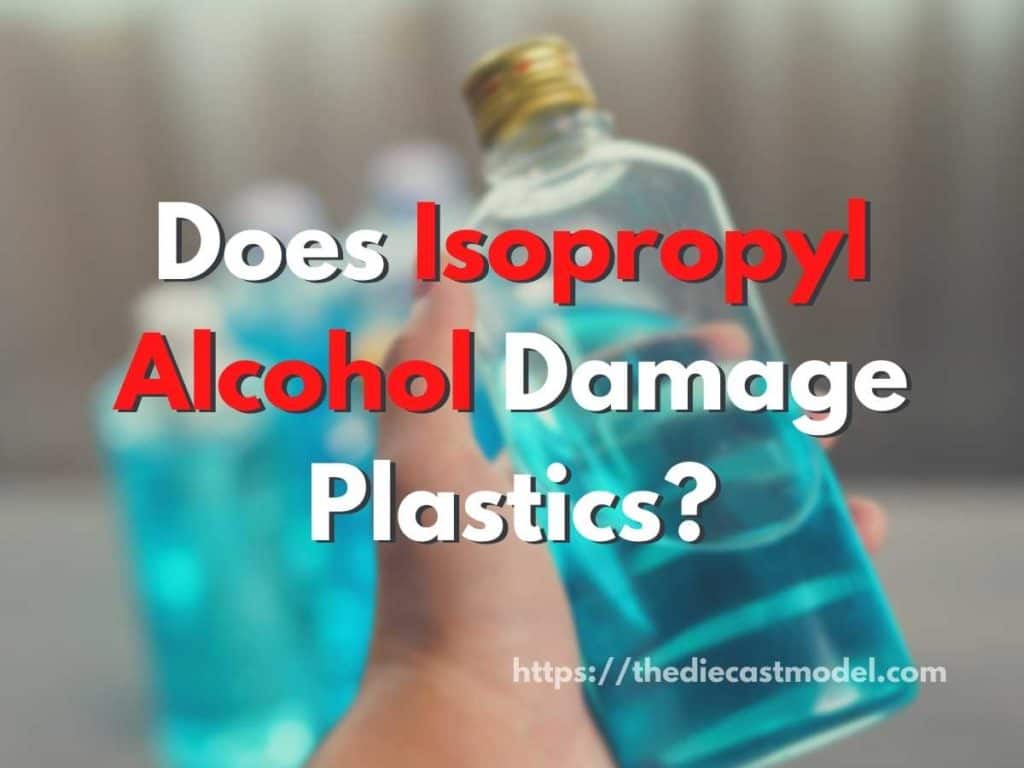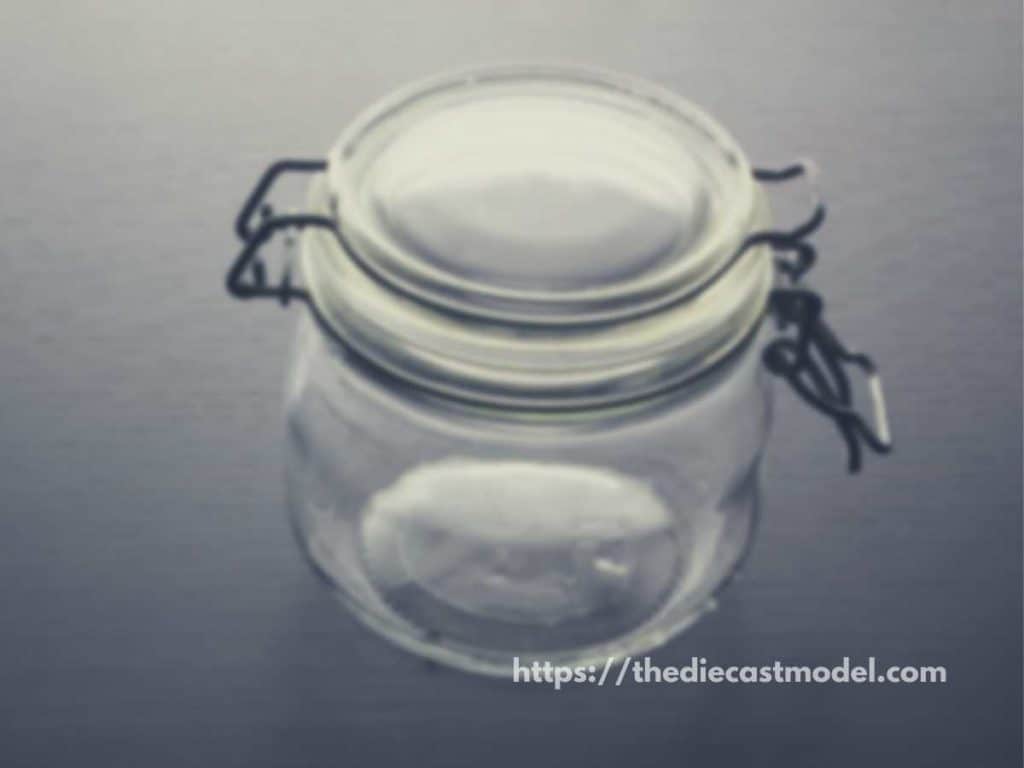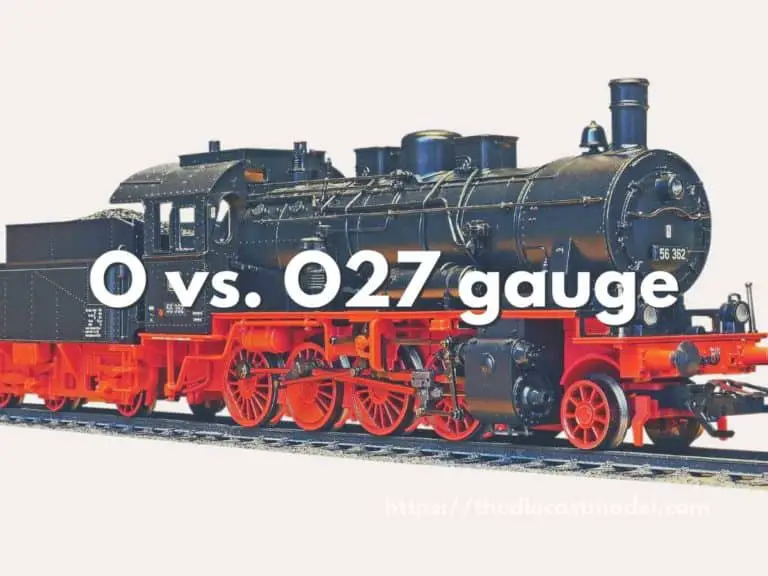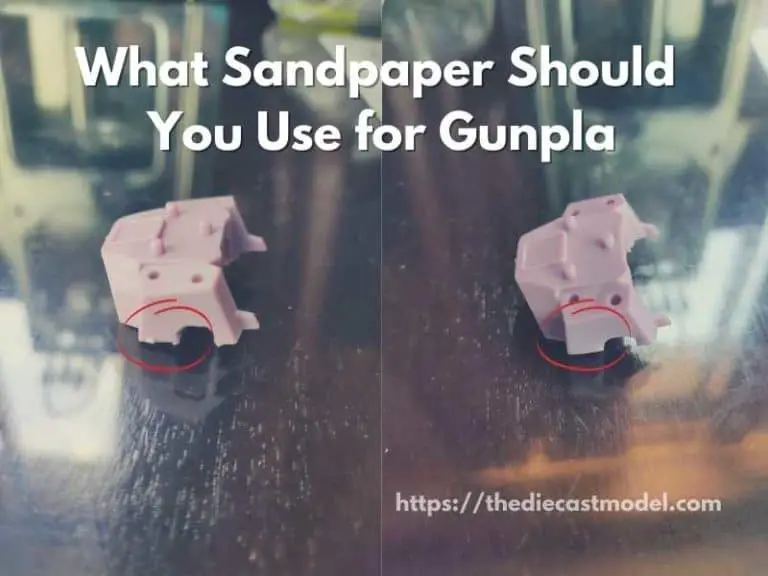Does isopropyl alcohol damage plastics?
Many model builders wonder if they should stop using isopropyl alcohol on their models. There are arguments both for and against this. Many people feel that there is no harm to the plastic models, while some say that it can cause the plastic to become brittle or melt, leading to several problems down the line. However, generally speaking, does isopropyl alcohol damage plastic models?
Isopropyl or rubbing alcohol does not damage plastic models. In fact, using rubbing alcohol is a safe way to clean and strip the paint on your models. However, note that using isopropyl alcohol can melt paints, which is something a modeler should note when using to clean their models.
This blog post will talk about if rubbing alcohol can damage plastic models. Furthermore, we will talk about the things we need to note when using alcohol in either cleaning or stripping the paint of your models. Lastly, some tips and tricks to get the most out of your isopropyl alcohol.

Does isopropyl alcohol affect plastic?
Isopropyl alcohol does not affect plastics. However, while it doesn’t affect plastics, isopropyl alcohol can damage the stickers and paints attached to the plastic. In fact, isopropyl alcohol can be used to thin paints, and soften the stickers on the plastic. Thus, it is advisable to be careful when using it to either clean plastics or remove their paint.
Isopropyl alcohol is a colorless liquid made from propanol and sulfuric acid. Its primary use is to produce other acrylics, glycerols, and ethers.
While we don’t need to get to the details on the chemical properties of isopropyl alcohol, it is generally safe to use for plastics.
In fact, many people use isopropyl alcohol to either clean their models or remove the paint of their models.
Paints, mainly acrylic paint, dissolve in isopropyl alcohol. That’s why many plastic modelers use the isopropyl alcohol dip when removing paint from their models.
This means dipping and storing their models inside a container full of isopropyl alcohol. Over time, this will remove the paint from the model, making it easier to repaint.
However, take note that isopropyl alcohol is ideal for removing acrylic paints. Enamel paints, on the other hand, will not always be removed when using isopropyl alcohol.
Because of variety, some enamel paints can be removed when using isopropyl alcohol. However, some are resistant. That’s why it is essential to know the paint used when using isopropyl alcohol to strip the paint.
Furthermore, a good tip when using isopropyl alcohol to strip the paint is to use concentrated alcohol.
You can use 95-99% isopropyl alcohol on plastics since it doesn’t damage plastics. In fact, it is ideal to use concentrated isopropyl alcohol when stripping paint since lower concentrations do a poor job. However, take note that 99% isopropyl alcohol evaporates fast. Thus, you have to tightly cover the container when using them.
Here is a sample jar you can use to dip the model in isopropyl alcohol. This is to make sure that isopropyl alcohol doesn’t evaporate fast.

Remember that concentrated isopropyl alcohol is very volatile. This means leaving it on an unsealed container can cause it to evaporate quickly. This means you will use more alcohol for the same amount of work, costing more money.
That’s why use it in a sealed container.
Another reason why people use isopropyl alcohol is to clean their models. In this case, isopropyl alcohol can still be used but take note that it is also used to remove paint.
That’s why, if the plastic model is painted, do not use isopropyl alcohol for cleaning as it may strip the paint.
If you really want to use isopropyl alcohol, use lower concentrations such as 40% since it doesn’t strip the paint as much as a 95-99% concentrated isopropyl alcohol.
Furthermore, isopropyl alcohol can damage the stickers making them softer and peel off.
Thus, it is better only to use isopropyl alcohol when stripping paint.
In the next section, I have some tips to make the most of using isopropyl alcohol on plastic models. These tips will ensure you can save some money and achieve great results.
Does isopropyl melt plastic miniatures?
As a general rule, isopropyl alcohol does not melt plastic miniatures. This is because plastic models or miniatures are resistant to the chemical properties of isopropyl alcohol. Thus, it does not melt or damage plastic models. However, while it is safe for plastics, it is still good to be careful when applying alcohol to plastics.
Now that you know that isopropyl alcohol does not melt plastics or plastic miniatures, I have some tips you can follow to achieve great results.
First, you should use concentrated isopropyl alcohol when stripping paint. If you can get 99% alcohol, then great. Concentrated isopropyl alcohol removes paint fast.
However, if you decide to use isopropyl alcohol to clean plastics, use a lower concentration.
When cleaning, I have found great results with 40% isopropyl alcohol. Plus, it does little to no damage to the paint unless you forcibly wipe it.
Now, 95-99% isopropyl alcohol is exceptionally volatile. That’s why you should always close the lid when using it to dip plastics. This will cost you less isopropyl alcohol to do the same job, saving some money.
Furthermore, 99% isopropyl alcohol can quickly dry your hands. Thus, it can cause some irritations. That’s why it is a good idea to wear gloves when using highly concentrated alcohol.
Also, dipping plastic models in isopropyl alcohol to remove the paint does not thoroughly remove all the paint. Therefore, it is wise to scrub and remove the loosened paint after dipping.
Since most acrylic paint uses primers, it is advisable to do so since primers are generally more challenging to remove than the paint.
Furthermore, you can reuse isopropyl alcohol to strip paint to save more money. However, it is recommended not to use the same alcohol to remove different colors as the colors can stick to the plastic.
For example, if you used the alcohol to strip a blue-colored paint, do not reuse it to strip a yellow-colored one as the blue paint can stick to the plastic.
This rarely happens, but there is no harm in being too careful.
Lastly, since stripping removes the old paint, some remnants or clumps of paint can remain. Make sure to filter it on a filter paper after using.
If you don’t have filter paper, a coffee filter works.
But how do you remove the alcohol from plastics? That’s our topic for the next section.
How do you remove rubbing alcohol from plastic?
You can remove rubbing alcohol from plastics by wiping it down and letting the excess alcohol evaporate. The good thing about rubbing alcohol is it is more volatile than water. This means it evaporates quickly, making it easy to remove from any surface.
It is easy to remove rubbing alcohol. In fact, if you’ve used highly concentrated isopropyl alcohol, you can leave it for a few minutes, and the alcohol will quickly evaporate.
If you want, you could also wipe it with a clean paper towel or microfiber cloth to prevent scratches.
Please take note that Isopropyl alcohol is flammable. This means when you want to remove isopropyl alcohol, do not expose it to heat.
It is better to let the alcohol evaporate rather than accelerate it with heat which can cause more harm than good.
With these, you are now ready to use isopropyl alcohol on your models. You know what to take note of, what concentration to use, and how to save money while doing so. I wish you luck on your build.
What’s next? What if you don’t want to strip the paint? Instead, you want to just apply paint over another. Can you just use paint on top of another? What are the things to look out for? That’s the topic for this blog post if you’re interested: Can Enamel paint be applied over Acrylic paint and vice versa?







